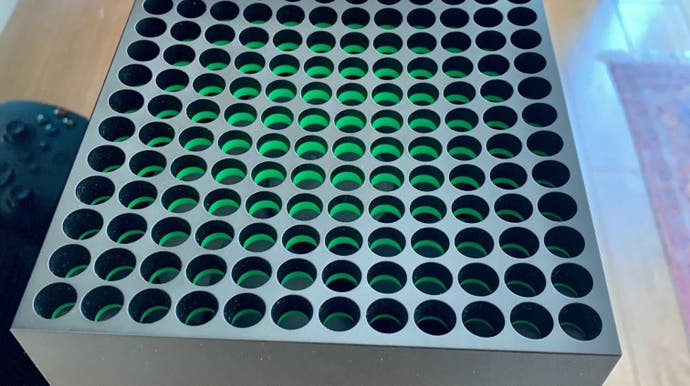The Xbox Series X is the least console-feeling console I've had
What Microsoft's new machine is like to live with.
UPDATE: For the authoritative take on Microsoft's new flagship console, Digital Foundry's full Xbox Series X review is now live.
I tell you what looks great on the Series X: Geometry Wars. Specifically Geometry Wars: Retro Evolved 2, but they're all bangers, aren't they? Chuck that bad boy up on a giant, fancy screen with some giant, fancy headphones and you're away. Other things that look great, while we're at it: Arkham Knight, and its distinctly sodden, gothic-neon-deco take on Gotham; Sunset Overdrive's eye-blistering orange; Dirt 5's dirt; Halo 5's silly lasers; and Gears 5, which despite best efforts to cram you into the traditionally rubbly, grey-brown interiors does still expand into some mega-vivid scenery - and plays, on a 120Hz screen, like hot butter in the pan.
I have no idea what enhancements, if any, these games have had. That is Digital Foundry's domain, and I daren't go near it. I think most of them are running at a higher frame rate than they would be on current-gen consoles, most of them benefit from HDR, by the Series X's automatic magic or human craft, and all of them are displaying somewhere on the scale between 1080p and 4K, wherein me and my mortal eyes begin to lose track. But honestly, I haven't looked it up - and honestly, I am not going to bother, because for me that is besides the point. The point is I actually played them all for the very first time this week - because early look at Dirt aside, they're all on Game Pass - and that all of them look, play, and simply feel better here than they have anywhere else so far.
This, you soon realise with the Series X, is also more or less the entirety of Microsoft's pitch.
That's not a particularly new idea - we've all heard about how Microsoft's vision of next gen is really about Game Pass, and how its jumbo punt on Bethesda is really about Game Pass, and how Game Pass is really about Game Pass, and all that. What feels new to me is how much the Series X as a piece of hardware aligns itself with that vision, too. Maybe it's because there's quite literally nothing exclusively new to play on it, but my experience with the console over the last few days, above all, has felt like an experience of Game Pass' potential - not just to be a nice bargain or player-friendly add-on, but to genuinely change how we think about games.
For one, this is because the Series X is the least console-feeling console I've had, in that everything about it is actively trying to avoid your attention, instead of draw it. It's whisper quiet - mid game, with TV on mute, I genuinely couldn't hear it. It didn't once get hot, or even beyond slightly warm. And as much as the whole Necron Obelisk vibe can evoke a slight sense of impending doom when looked at for too long, I'm a fan of the sheer brutalism. Brutalism is in, kids, and that means there's a chance this console actually blends into an adult human dwelling. It's not going to get anywhere near most dedicated media units but just play it off against some bougie house plants and you're Insta ready. The point is, soon enough you will completely forget it's there.
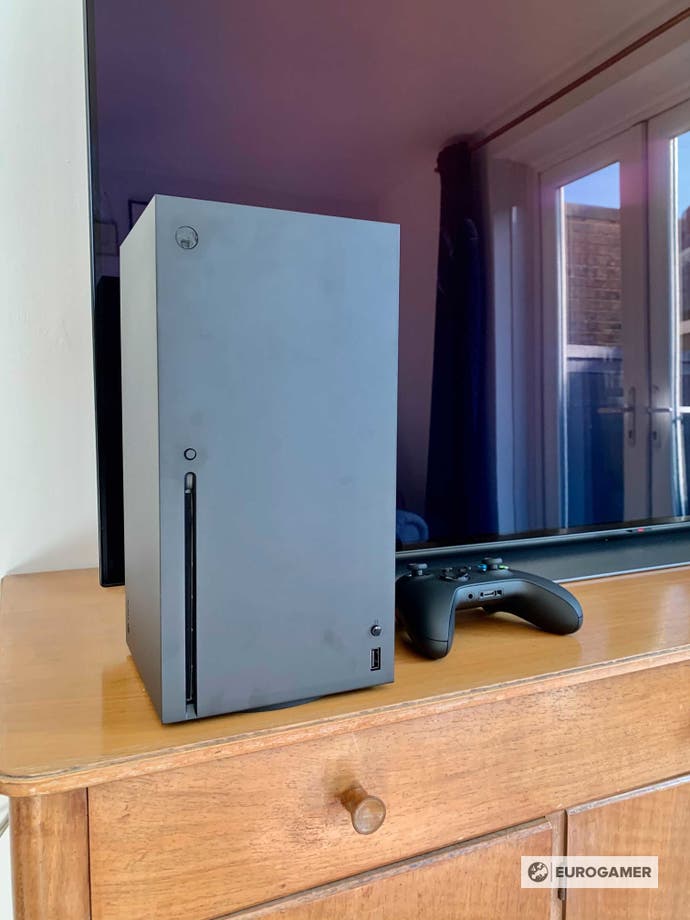
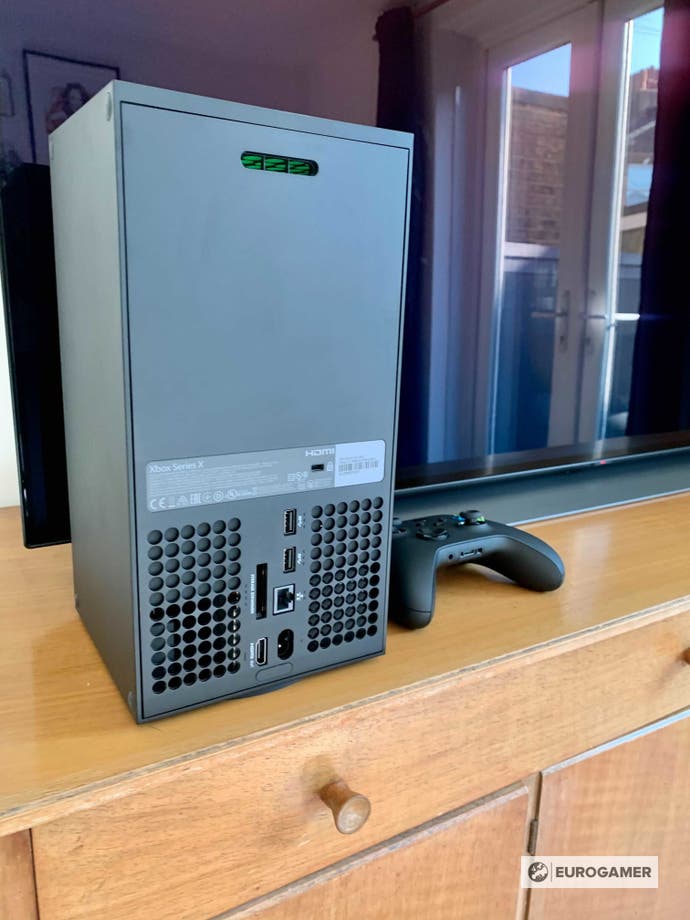
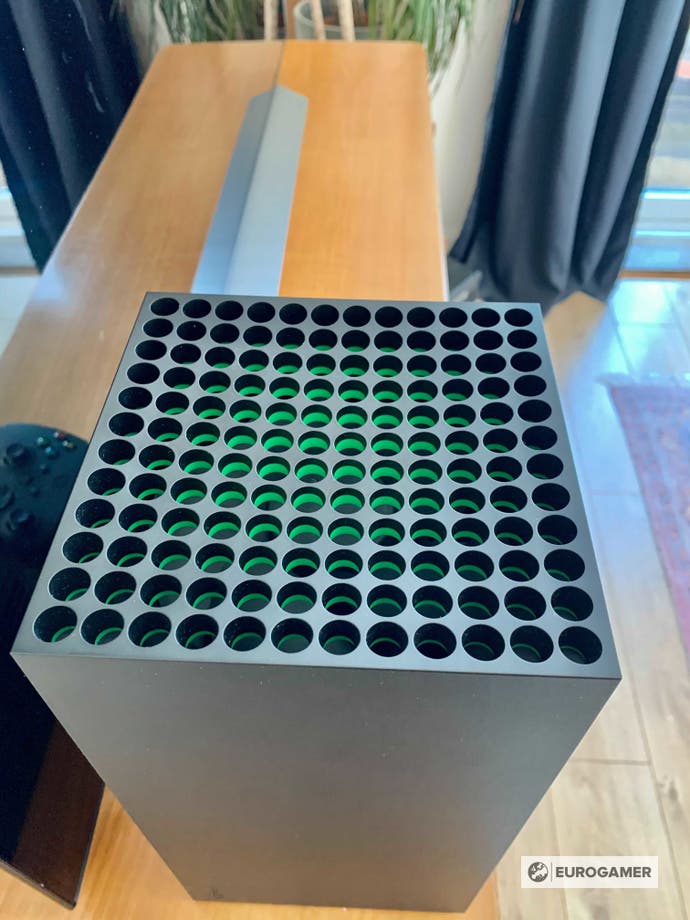
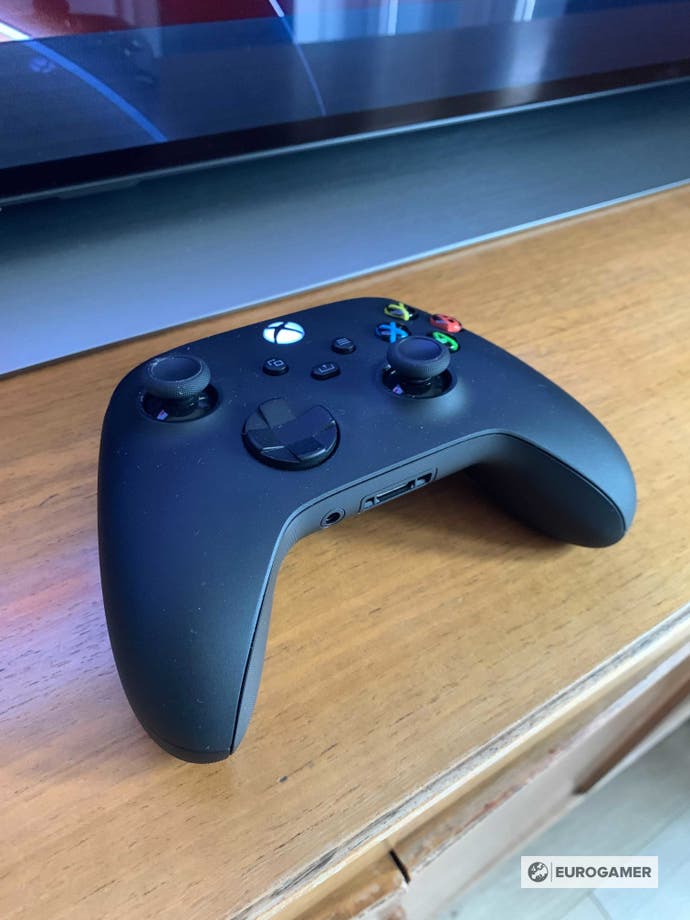
This is also what it's like to use. Xbox has concocted lots of proprietary names for things, like Quick Resume™ and Xbox Velocity Architecture™ and Xbox Smart Delivery™, to go alongside pre existing jargon like Auto HDR, VRR, FreeSync, HDMI 2.1 and the rest, but the purpose of all of it is to simply get out of your way. In plain English the console is super fast, which means you boot, load in and get playing games in a matter of seconds, and can toggle between them, suspended in place, at a whim. This is the Series X at its absolute best, and also its most impactful: jumping in and out of your library is very different to how it feels right now on any other console or PC, and suddenly the experience of working through a backlog is transformed. I can play half an hour of Arkham Knight for the first time, decide it's decent but I'm craving a challenge so swap into Sekiro, and hop back into a few rounds of Geometry Wars to cool off, or pass the pad to my kid, if I had one, to go straight back into where they were in Minecraft without me losing my spot. It's hard to sell without sounding like you're actively trying to sell it, but it's a small tweak that feels genuinely transformative. It's door-opening, on an intuitive UI (like most people, I don't have an Xbox One, but on the Series X's identical interface I found settings quickly, and features immediately easy to understand), and the result is a shattering of the barriers to playing what you already own.
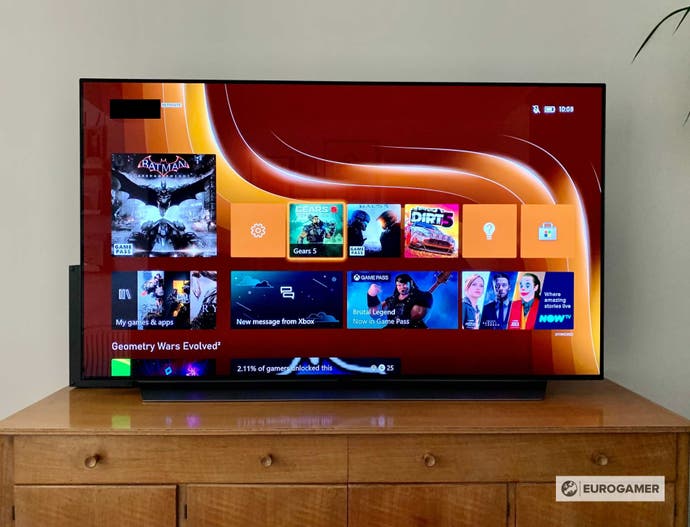
But, caveats. Custom, whippet-fast SSDs can't download your games faster than your internet allows - or give you much room for the ones you own. I have about 35 games downloaded (most hand-me-downs from Digital Foundry's tinkering), that are of widely varied age and size, and take up all of the internal storage and about half of the expansion card provided. What you do get is a sort of half-step towards what I suspect is the real end game, of streaming games with true immediacy: you can pack out your storage with a moderate library of real variety, wait for expansion card price drops, and use traditional external storage intelligently by packing that with your back catalogue, but none of this will ever quite be the same as the true freedom you get from hopping in and out of streaming on YouTube, Amazon Prime, or Netflix. But it's close. Close enough to feel like a real and major change.
There's also a tiny whiff of fussiness, in places. VRR, for instance, caused a kind of input-refreshing black frame flicker when the console was set to 120Hz, which made games genuinely unplayable but was fine on the dashboard menus and everywhere else - probably something fixed by an update, or tweaking settings or inputs or whatever else, had I had the time. Auto HDR, self-describing, is another ingenious mechanism for the console getting out of your way, and for making old games new again - Geometry Wars again a fine example of the rejuvenation - but it does cause some white text like dialogue to blow out in some games, and gets so carried away in others, like GTA 4, that it's been turned off entirely.
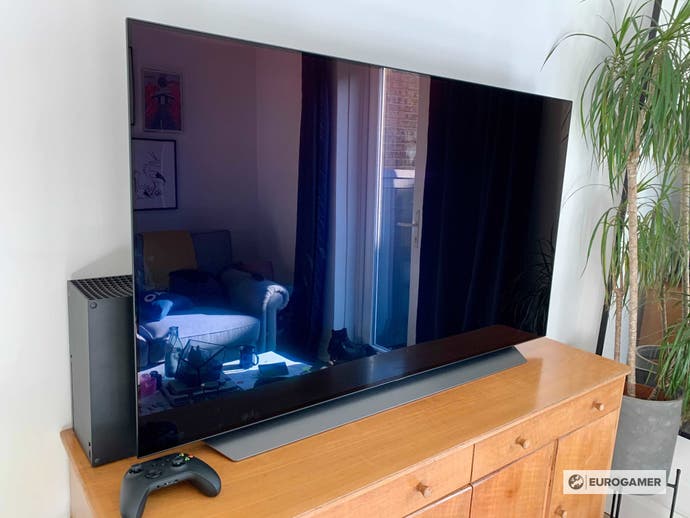
But these are, really, quite miniscule issues. In fact 'issues' itself is arguably too strong a word. They're quibbles, encountered in part because I'm actively looking for them. Stepping back, what they indicate to me is that the Series X is a seriously high performance console that just needs the right conditions to really perform. It needs a flashy TV panel, with the requisite brightness for true HDR, with HDMI 2.1 for the really transformative visuals, and with variable refresh rate for the smoothness. It needs a flashy headset or sound system for making the most of the audio. And it needs all the bespoke, and therefore expensive internals to get it all working properly - just as a Formula One car, to use a slightly tired analogy, needs the right tyres, and the right flappy bits, and the funny steering wheels that pop off, if it wants to truly go fast. And it ideally needs the one in the hotseat to know just a bit more about what they're doing than usual, if it's going to really hum.
If you've got all that though, and you don't mind just a smidge more thought than usual for a plug-and-play thing like a console, what a joy it is to use. And how genuinely forward thinking its vision is too: a step away from forcing you forwards - from the idea that you must need a new console to play its exclusive games, to the idea you might want one, to make your old games better, to make your vast and dusty pile of shame new again, to actually be on display in your home. This is a console that, like the PS5, is coming roughly six to eighteen months earlier than its truly tentpole games, but a few days with the Series X tells me it doesn't really need them. It's the console itself I actually want.
